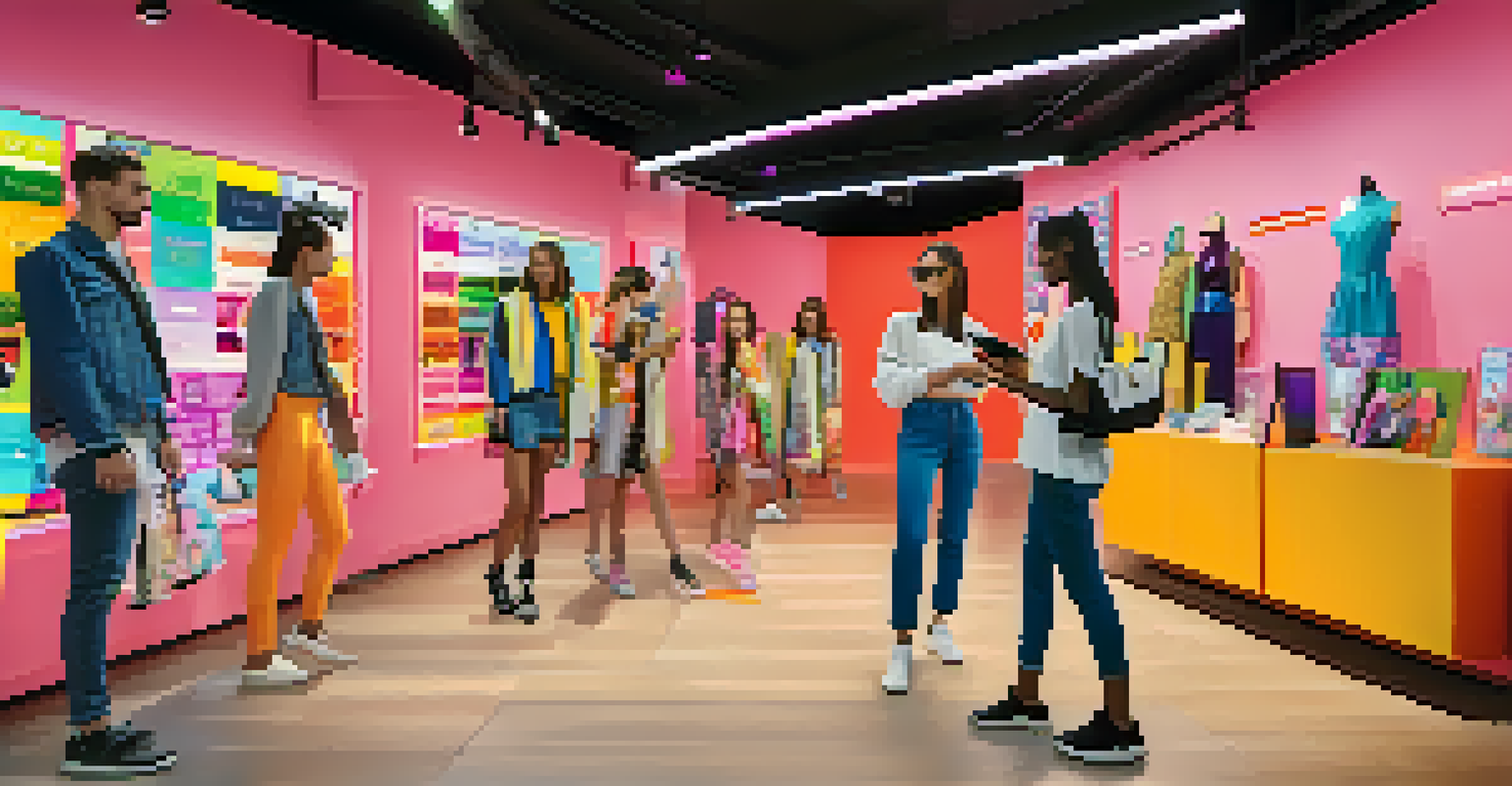Boosting Sales with Augmented Reality in Retail Spaces

Understanding Augmented Reality in Retail
Augmented Reality (AR) is a technology that overlays digital information onto the real world, enhancing the shopping experience. Imagine walking into a store and seeing virtual product demos right in front of you—this is the essence of AR in retail. It's not just about flashy displays; AR can provide valuable information and interactive experiences that engage customers more deeply.
Augmented Reality will change the way we shop, providing interactive experiences that enhance customer engagement and satisfaction.
As we explore the AR landscape, it's important to recognize how it differs from Virtual Reality (VR). While VR immerses users in a completely digital environment, AR blends the digital with the physical, making it more accessible and practical for retail. This seamless integration can attract tech-savvy shoppers looking for innovative solutions.
The potential of AR in retail is vast and can be tailored to various product categories. From fashion to home decor, retailers are finding new ways to engage customers and drive sales through immersive experiences.
Enhancing Customer Experience with AR
One of the biggest advantages of AR in retail is its ability to enhance the customer experience. For instance, beauty brands are using AR apps that allow customers to virtually 'try on' makeup before making a purchase. This not only increases engagement but also helps customers feel more confident in their choices, reducing return rates.

Additionally, furniture retailers are leveraging AR to help customers visualize how a piece of furniture would look in their homes. By simply pointing their smartphone at a room, customers can see a 3D model of the furniture in their space. This interactive approach fosters a personal connection to the product, encouraging purchases.
AR Enhances Retail Shopping Experience
Augmented Reality transforms shopping by providing immersive and interactive experiences that engage customers more deeply.
Ultimately, a positive shopping experience can lead to higher customer satisfaction and loyalty. As customers engage with AR technology, they are more likely to share their experiences on social media, which can amplify brand visibility.
Driving Impulse Purchases with Interactive Features
AR can effectively drive impulse purchases through interactive features that capture shoppers' attention. For example, gamified experiences—where customers complete challenges to unlock discounts or rewards—can create excitement and spur on-the-spot buying decisions. This blend of entertainment and commerce appeals to a younger demographic that thrives on engagement.
The future of retail is not just about selling products; it's about creating memorable experiences that connect with customers on a deeper level.
Moreover, AR allows retailers to showcase products in a more dynamic way. Imagine a clothing store where customers can scan QR codes to see models wearing the outfits in various settings. This not only provides inspiration but also makes it easier for customers to envision themselves in those styles, leading to more spontaneous purchases.
By integrating these interactive elements, retailers can transform the shopping journey into an engaging adventure, making it more likely that customers will walk away with items they hadn’t initially planned to buy.
Reducing Returns Through Better Visualization
One of the challenges retailers face is the high rate of product returns, often due to unmet expectations. AR technology can help mitigate this issue by providing better visualization of products before purchase. When customers can see how a product fits or looks in their environment, they're less likely to experience buyer's remorse.
For example, shoe retailers are using AR to allow customers to see how shoes look on their feet through a smartphone app. This level of detail helps customers make informed decisions, ultimately leading to fewer returns and a smoother shopping experience.
AR Reduces Product Returns
By improving product visualization, AR helps customers make informed decisions, leading to fewer returns and increased satisfaction.
By reducing returns, retailers can save on logistics costs and improve their bottom line. Customers, in turn, feel more satisfied with their purchases, fostering a positive relationship with the brand.
Tailoring Marketing Strategies with AR Data Insights
Implementing AR in retail not only enhances the shopping experience but also offers valuable data insights for marketing strategies. By tracking how customers interact with AR features—what products they engage with and for how long—retailers can gain a deeper understanding of consumer preferences.
This data can be leveraged to create personalized marketing campaigns that resonate with target audiences. For instance, if a particular product garners significant interest through AR interactions, retailers can promote it more heavily across various channels, maximizing its visibility.
In essence, AR serves as a tool for retailers to refine their marketing efforts, ensuring that they’re meeting the needs and desires of their customers effectively.
Challenges in Implementing AR in Retail
While the benefits of AR in retail are clear, there are challenges to consider as well. For instance, not all customers own smartphones capable of supporting advanced AR applications, which could limit engagement. Retailers must also ensure that their AR experiences are user-friendly; if customers find the technology cumbersome, they may shy away from using it altogether.
Additionally, the cost of developing high-quality AR applications can be significant. Retailers, especially smaller ones, may struggle to allocate budgets for these innovations. It’s vital for businesses to weigh the potential return on investment against the costs involved in creating and maintaining AR experiences.
Data Insights Tailor Marketing Strategies
AR technology provides valuable data on customer interactions, allowing retailers to create personalized marketing campaigns that resonate with shoppers.
Despite these challenges, many retailers are finding creative ways to implement AR without breaking the bank, such as partnering with tech companies or utilizing existing platforms to create engaging experiences.
The Future of AR in Retail: What to Expect
As technology continues to evolve, the future of AR in retail looks promising. We're likely to see increased integration of AR with other technologies like Artificial Intelligence (AI) and the Internet of Things (IoT). This convergence could lead to even more personalized and immersive shopping experiences, making it easier for retailers to connect with their customers.
Moreover, as AR becomes more mainstream, customer expectations will shift. Shoppers will begin to anticipate these technologies as standard offerings rather than optional extras. Retailers who embrace AR early will not only gain a competitive edge but also position themselves as leaders in the industry.

In conclusion, the journey of AR in retail is just beginning, and as brands continue to explore its potential, we can expect innovation that reshapes the shopping landscape for years to come.